Adding a New Layer: 20th Century Heritage in Worcestershire – Civil Buildings
- 10th June 2020
From Police Stations and Local Government Offices to Civic Centres and Post Offices – Public Architecture is generally designed to embody institutional values and responsibilities as well as pride in public services and more recently a greater sense of community and cohesion. From the grandiose to the more modest, this group of buildings reflects who we are and how we have changed as a society and are often of considerable community value.
Over the past two years Worcestershire’s Historic Environment Record has been working to identify, record and better understand the significance of 20th Century buildings and public places across the County. Many more await discovery and assessment!
Funded by Historic England, this project has also aimed to strengthen the public’s awareness and appreciation of ‘everyday’ 20th Century heritage, its conservation, value and significance.
From County Small Holdings and Schools to Village Halls and National Chain Stores, this blog will – over the next couple of months – explore the diverse range and legacy of our 20th Century heritage and celebrate the extra layer of richness it brings to both our lives and landscapes.
Civil buildings and places are those that relate too, or benefit, ordinary citizens. They include Police Stations, Fire Stations, Ambulance Depots, buildings associated with Law and Justice, buildings associated with Local Government, Post Offices, Civil Centres and Village and Community Halls (see our earlier Village Halls blog!)
Police and Fire Stations
Buildings related to the emergency services, including police stations and fire stations, are regularly upgraded in order to keep them operationally viable. Many older buildings have been converted for industrial or domestic use.
The modern police force was effectively created when, in 1829, the Metropolitan Police Act established a 1000 strong police force in London (Historic England 2017, 10). The Worcestershire Constabulary was formed in December 1839. Borough Forces were already in existence in the County in Bewdley, Droitwich and Evesham. Kidderminster and Worcester City also had their own forces. Bewdley, Droitwich, Evesham and Kidderminster were eventually incorporated into the County force and both the County and Worcester City Police became part of West Mercia Constabulary in 1967.
Early 20th Century police stations were often built in Georgian or Domestic Revival styles. Predominately built in central locations, close to their Victorian counterparts, they often incorporated magistrates’ and law courts. From the 1950s police stations were generally built by County architects and from the 1960s police architecture was adopting a more modern style (Historic England 2017, 12).
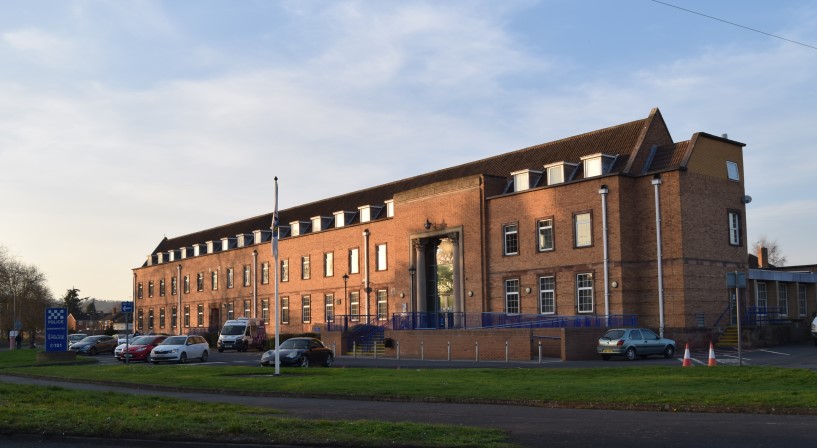
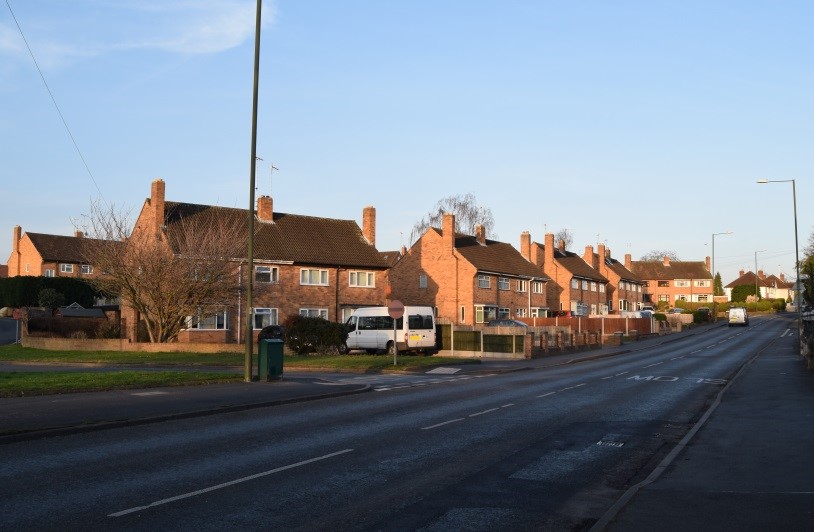
Kidderminster Police Station dates from the 1930s, although it wasn’t opened officially until May 1955. Built in buff brick in a Neo-Georgian style the building has a central recessed entrance framed with a pair of giant Corinthian columns. The small housing estate to the north-west – homes for police officers and their families – is contemporary. There is also a sports /recreation field behind. (Kidderminster Local List).
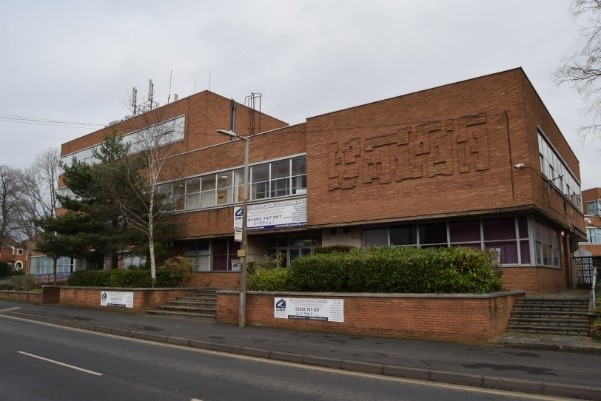
Many post-war public buildings, including the Police Station in Stourport-on-Severn incorporated Public Art.
Until the 19th Century fire services were provided by voluntary bodies, parish authorities or insurance organisations. The 1938 Fire Brigades Act made it mandatory for councils, of all County Boroughs and Districts, to act as fire authorities; responsible for the provision of services. The Auxiliary Fire Service was also formed in 1938, as part of the Civil Defence Service – a civilian volunteer organisation, set up in 1935, which also included the Air Raid Precautions Service, set up in 1937. Local brigades and auxiliary fire service units merged to become the National Fire Service in 1941. The Civil Defence Service, which had been disbanded in 1945, remerged as the Civil Defence Corps in 1949 as geopolitical tension increased following the end of World War II. The 1947 Fire Services Act disbanded the National Fire Service and again made firefighting the responsibility of local County and Borough councils. The Auxiliary Fire Service was again reformed in 1948 as a national fire reserve.
The County of Hereford Fire Brigade and The Worcester City and County Fire Brigade merged in 1974, following national reorganisation of local government, to create the County of Hereford and Worcester Fire Brigade. The two counties spilt in 1998 but a joint fire authority has continued to operate throughout the two counties. Today the Hereford and Worcester Fire and Rescue Service have 27 fire stations in active service.
With their large – typically red – garage doors, fire stations are instantly recognisable. Modern fire stations require key design features to meet on-site training needs, storage for vehicles and apparatus and accommodation, including areas for recreation and for crew, including, since the 1970s, for women. Training yards and buildings, including towers and mock houses are often found to the rear of stations.
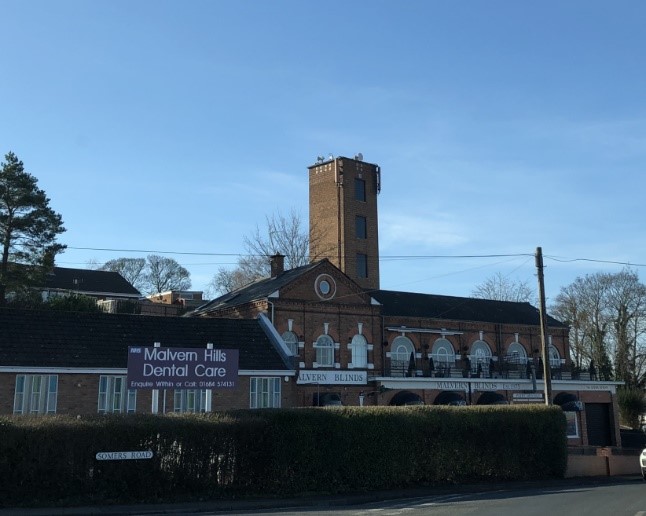
The ‘Old Fire Station’ in Howsell Road, Malvern, now Malvern Blinds, still retains its drill tower for routine exercises and training
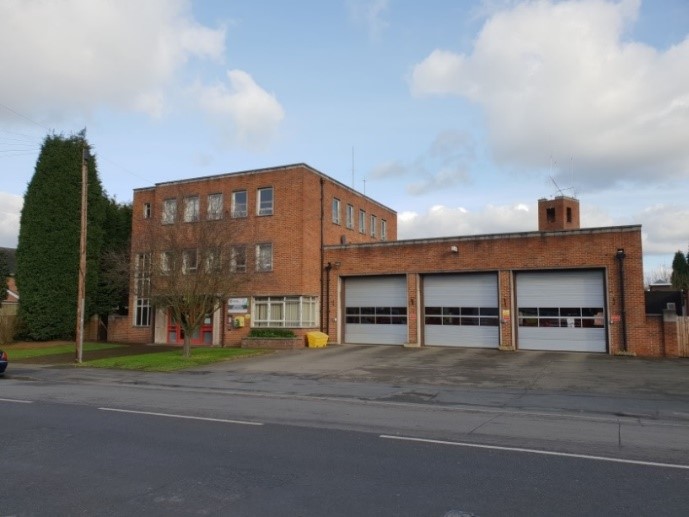
Redditch fire station was built in the 1960s to serve the New Town and incorporates a three-storey brick office, a single storey engine garage with three bay doors and a training tower.
Government Buildings
A surge in local government building projects followed the 1888 Local Government Act, which created County Council authorities, and the 1894 formation of Urban and Rural District Councils. Many buildings including County and Town Halls, Civic Centres, Government Offices and the buildings of former public services such as the Post Office were designed by architects working for the Office of Works (1851-1940) and its later incarnations, including the Ministry of Works (1943-1962) and the Property Services Agency (1972-1993). The 1920s and 1930s were, in particular, a great age of civic architecture and many public buildings were constructed in the inter-war period in response to the increased responsibilities of local government (East and Rutt, 2012, 1). By the 1930s civic design was becoming increasingly influenced by Continental Modernism and prefabricated techniques (East and Rutt, 2012, 1). Reforms to local government in 1974 led to the development of many new buildings, many built in Vernacular Revival styles using brick.
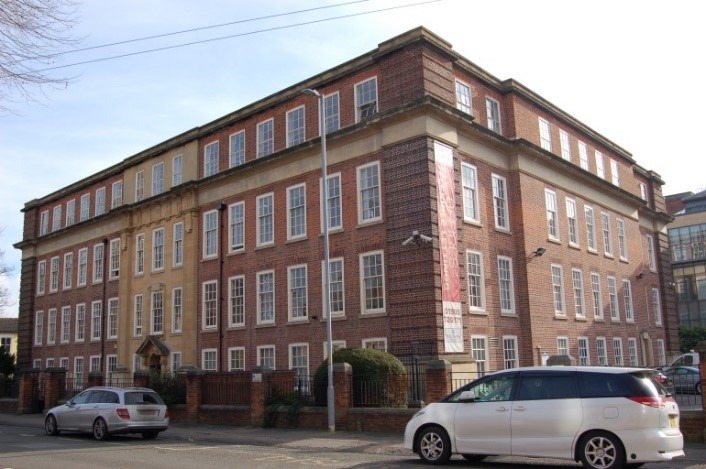
Former County Buildings in St Mary’s Street, Worcester. Dated 1929-30. Originally three storeys, with a fourth added above the cornice in 1935. Designed by A. V. Rowe and Neo-Georgian in style (Worcester City Local List and British Brick Society).
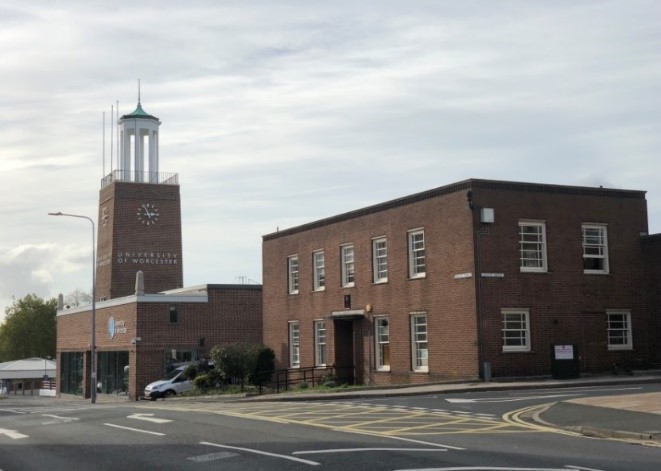
The former employment exchange in Worcester (building closest to camera) dates to 1939 and was designed by the Architects of the Office of Works. Adjacent to the Grade II Listed Former H, A Saunders Garage (Austin House), the building shares its brown brick in Flemish bond and Art Deco detailing (British Brick Society).
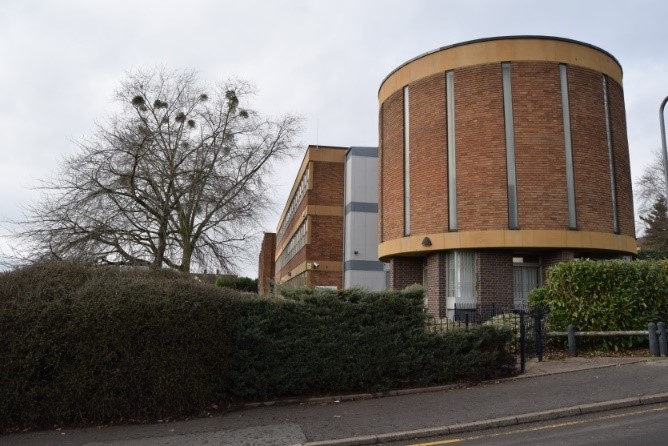
Stourport-on -Severn’s Civic Centre was commissioned by the former Stourport Urban District Council and designed by Andrews and Hazzard of Birmingham in 1963. As well as hosting offices for Local Government, the centre incorporated facilities for music, dancing and leisure. After being threatened with demolition in 2011 a public campaign was launched to save the centre. Civic Centres were more self-consciously designed as part of their communities and, as a consequence of their function and how this is embodied through architecture, can have considerable architectural, historic and communal value.
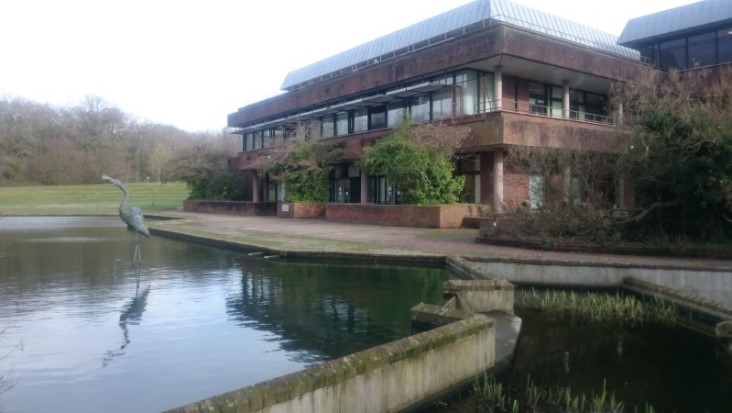
Worcestershire’s County Hall was built in 1977 following the 1974 merger of Herefordshire and Worcestershire into the single administrative county of Hereford and Worcester (Herefordshire became a unitary authority in 1998, as part of the 1990s Local Government Reform). Designed by Robert Matthew Johnson-Marshall and Partners, the hall is adjacent to woodland and sits within its own garden setting complete with green spaces, large pond and sculptures.
Post Offices
The enormous expansion of the Post Office, from the mid-19th Century, encouraged the development of purpose-built Post Offices, including in rural areas, as well as pillar boxes. This expansion continued into the 20th Century, supported by growth in new areas including banking and telecommunications (Clarke, 2008, 6). By 1913 the national Post Office network incorporated 24,354 Post Offices (Clarke, 2008, 14). Post Office buildings vary considerably in their architectural style with many early examples ornate with high ceilinged interiors and mahogany counters (Clarke, 2008, 14). From the late 19th Century, Post Offices, influenced by the Office of Works, adopted a ‘house style’ that initially embraced classical designs. Although quick to adopt modern constructional techniques – which allowed for flexible and well-lit spaces – the Post Office façade was intended to promote a sense of security, uniformity and traditionalism and from the Edwardian period architects were adopting vernacular materials and styles with more standardised detailing including Roman figured clocks and Roman Lettering (Clarke, 2008, 20). Despite a post-war down-turn in profitability, the Post Office continued to invest in new buildings and the upgrading of older premises, demanded by increasing mechanisation. The privatisation of the Post Office led to more freedom in design and materials from the 1970s (Clarke, 2008, 24).
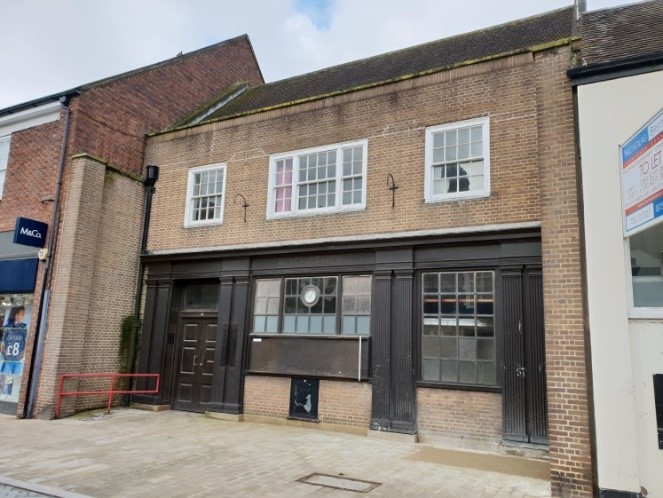
The Post Office in Bromsgrove opened in 1937 and was designed by the Office of Works in a Neo-Classical style with casement windows on the first floor. The Office, which closed in 2017, has been re-developed. This has led to the loss of much of its original interior, including wood panelling.
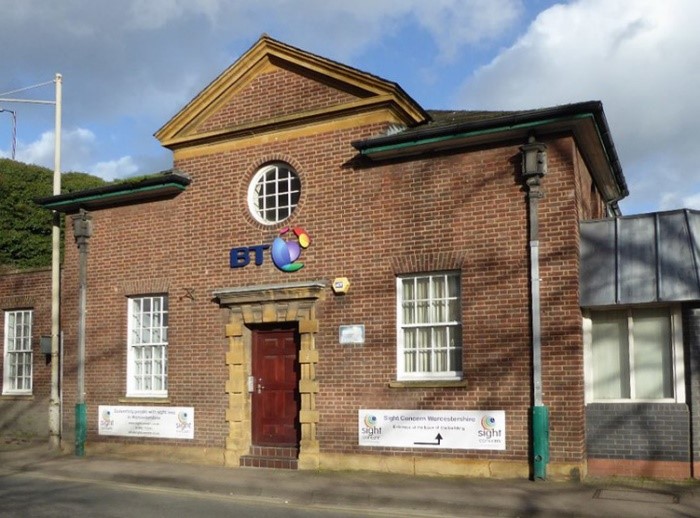
The Worcester Station Sorting Office was constructed circa 1935 and, like Great Malvern’s Post Office was designed by architect Henry Seccombe. Photograph © Philip Halling and licensed for reuse under this Creative Commons Licence.

Designed in the modern style by H L Williamson, the main post office in Evesham opened in 1960.

Sources
Clarke, J 2008 Purpose-Built Post Offices: A Rapid Assessment and Suggestions for Future Work. English Heritage Research Department Report Series No. 29 29-2008
East, J and Rutt, N 2012 The Civic Plunge Revisited, Twentieth Century Society
Web Resources
British Post Office Buildings and Their Architects: An Illustrated Guide
Historic England, Law and Government Buildings, Listing Selection Guide
Kidderminster Local Heritage List
Local List of Heritage Assets: Worcester
The Civic Stourport, History of the Civic
Wikipedia Hereford and Worcester Fire and Rescue Service
Worcestershire Police History 1833-1967
Post a Comment